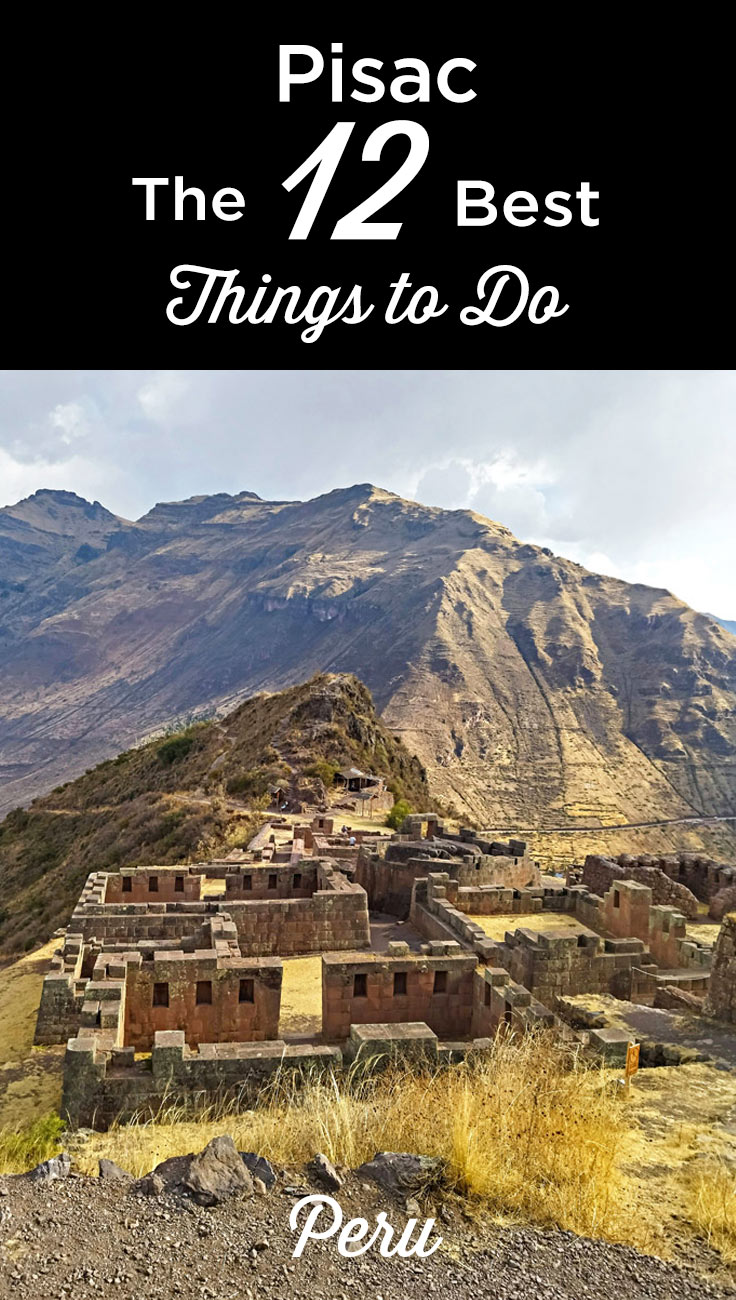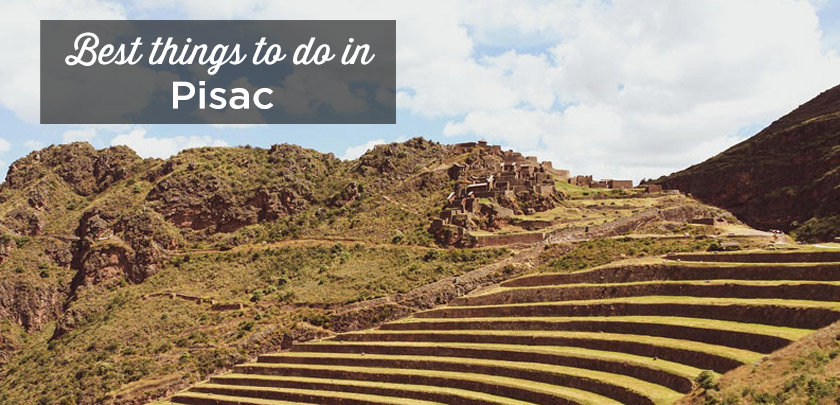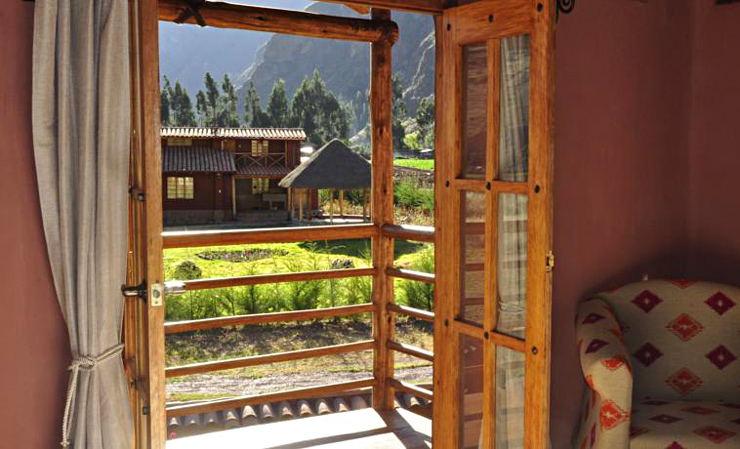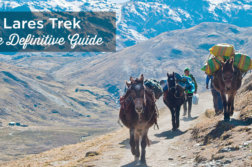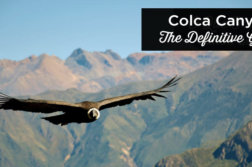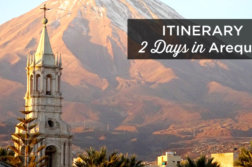Pisac: The 10 Best Places to Visit (+ Tips)
Pisac is one of the must-visit spots in the Sacred Valley of the Incas, known for its impressive archaeological site and colorful artisan market that attracts travelers from all over the world.
Founded in the 15th century during the Inca Empire’s expansion, Pisac was later taken over by the Spanish, who built directly over the Inca foundations, creating a unique mix of cultures you can still see today.
In this guide, I’ll show you everything you need to plan your visit to Pisac: the best sites to see, my favorite restaurants and hotels for every budget, and some practical tips to help you make the most of your time.
You’ll also find out how to get there from Cusco and my best advice for visiting one of the Sacred Valley’s most popular towns.
Sommaire
- Pisac: The 10 Best Places to Visit (+ Tips)
- 1. The Andean market of Pisac
- 2. Explore the Inca Ruins of Pisac
- 3. The Potato Park
- 4. See the community museum
- 5. Attend mass in Quechua
- 6. Marvel at the botanical gardens
- 7. Cochahuasi Animal Sanctuary
- 8. Awana Kancha
- 9. The village of Lamay
- 10. Discover 10,000 years of history
- 11. Hacienda Sarapampa
- 12. Relax at the spa
- Where to stay in Pisac?
- Where to eat in Pisac
- How to Get to Pisac
- How Much Time Should You Spend in Pisac?
- Is It Possible to Combine Pisac with Other Places in the Sacred Valley in One Day?
- Which is the best time to visit Pisac?
- Book Your Flight at the Best Price
- Rent a Car in Peru
- Traveling to Peru? These articles will help you!
1. The Andean market of Pisac
The Andean market of Pisac is a must visit. It is a large typical market where fruits and vegetables are sold, as well as local handicrafts.
In recent years, it has become one of the main tourist attractions in the Sacred Valley, and almost every agency stops here.
To discover its more traditional side, steer away from the handicrafts and head instead for the fruit and vegetables – you can even enjoy a glass of fresh fruit juice!
- Hours and days of the Pisac market: Tuesdays, Thursdays and Sundays in the Plaza de Armas, but Sundays are the busiest!
- What to buy at the Pisac handicraft market: the best souvenirs you can buy are traditional textiles (ponchos, gloves, etc.), ceramics, jewelry and musical instruments.
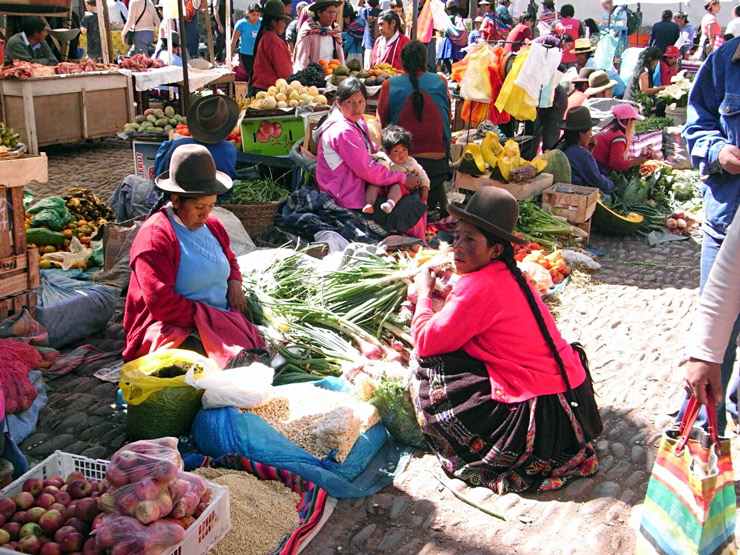
2. Explore the Inca Ruins of Pisac
Perched on a hill, the archaeological complex of Pisac is the biggest must-see in Pisac and one of the most impressive sites in the Sacred Valley!
Originally a royal residence built during the Inca Pachacutec era, the site is divided into two main areas: a residential sector for farmers and a ceremonial sector for the nobility.
Main Attractions at the Pisac Ruins
At the highest point of the site is the Intihuatana, a sacred stone used by Inca priests for sun worship and astronomical observations.
The agricultural terraces, built in stone, are another highlight. They served to cultivate crops, prevent erosion, and manage rainwater — some of the ancient water channels are still functioning today!
The Kallaqasa area, located on a hilltop, was used as a defensive zone.
Facing it, you’ll notice several openings carved into the cliff: these are the tombs of the Tankanamarka cemetery, one of the largest known Inca burial sites. Although the tombs were looted and are now empty, they remain an impressive sight.
The site also includes a residential sector with houses and storehouses that reflect daily Inca life, and a ceremonial area used for religious rituals.
How Long Does It Take to Visit the Pisac Ruins?
It depends on your pace, but plan to spend about 2 to 3 hours to explore the site calmly, visit all the main areas, and take in the incredible views.
How to Get to the Pisac Ruins?
The ruins are located about 8 miles from the town of Pisac. There are two ways to reach them: on foot or by taxi (around 30 soles).
Public transportation is no longer available to the site. If you choose to walk down, the trail takes about 1 hour and offers beautiful panoramic views along the way.
Is the Entrance to the Ruins Included in the Tourist Ticket?
Yes, the entrance to the Pisac ruins is included in the Cusco Tourist Ticket.
Important: you cannot purchase the ticket at the entrance, so be sure to buy it in advance:
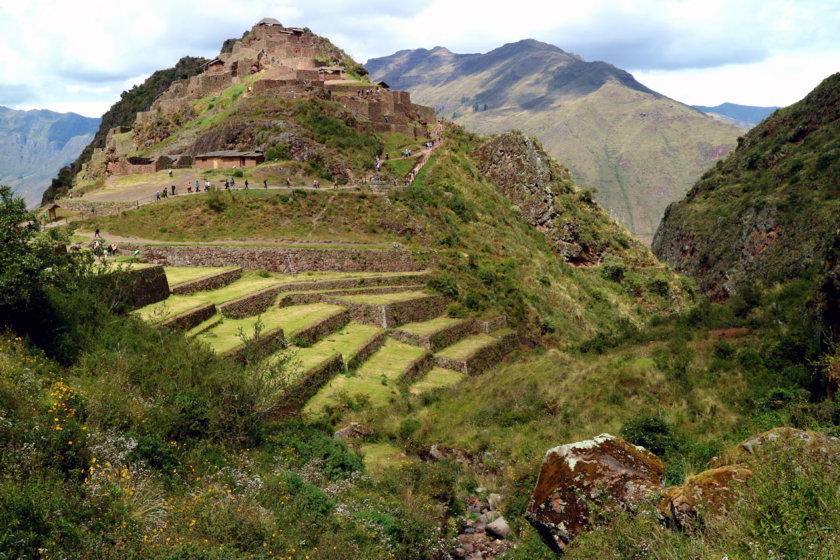
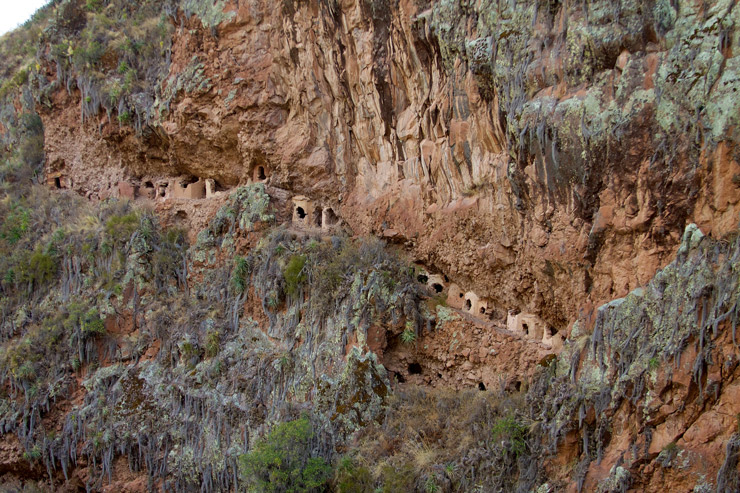
3. The Potato Park
The community association “Parque de la Papa” brings together more than 6,000 inhabitants from 5 communities.
Its objective is to preserve the cultural heritage and biodiversity of the region through various initiatives, including tourism activities. Profits are reinvested in these communities.
They offer half-day or two-day excursions with overnight stays, including, for example, discovering local potatoes (papa arariwa and qachum waqachi), hiking to the Kinsa Q’ocha, Puma Qocha and Azul Qocha lakes, and exchanging weaving techniques.
- To contact them: pdp@andes.org.pe – (+51) 937 384 997
-
To visit the Potato Park, you have to go through an agency. The tour leave from Cuzco or Pisac. – You can book the tour here!
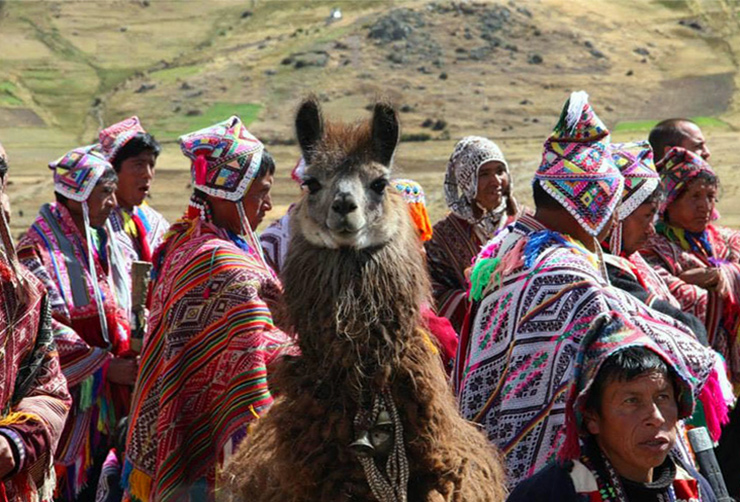
4. See the community museum
The Community Museum is a free museum in Pisac with two exhibits.
The first is an exhibition of traditional weavings from different communities in the region, as well as the ceramic work of several local artisans.
The other room displays archaeological finds (pottery, textiles, human remains, etc.) from Pisac, dating from 700 BC to the Inca period (15th-16th centuries).
The different areas of this ancient Inca imperial city are presented, along with an explanation of the Andean cosmovision.
- Address: corner of Amazonas Avenue and F. Zamalloa Avenue, Sunday to Friday, 8:00 a.m. to 1:00 p.m. and 2:00 p.m. to 5:00 p.m., free admission.
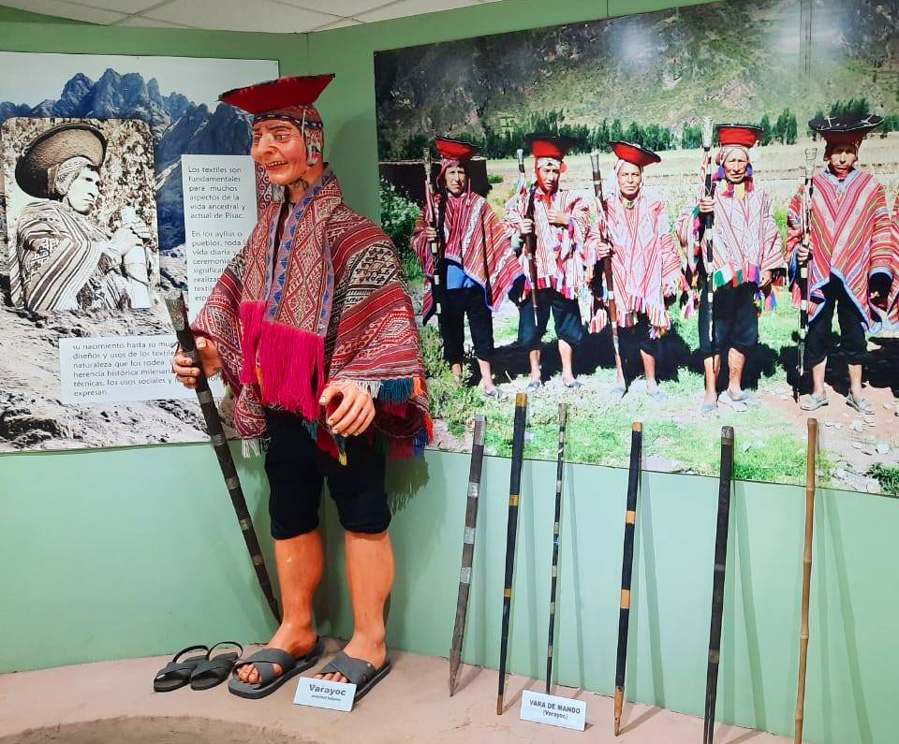
5. Attend mass in Quechua
Whether you are a believer or not, Sunday mass is a must-see in Pisac.
It is always interesting to learn more about Peru’s culture, especially in the Andean regions, where traditions are still very strong!
Mass is celebrated in Quechua in the San Pedro Apostle Temple with the help of seven “Varayocs” (traditional authorities, similar to the mayor) from the neighboring communities of Motupa, Saccaca, Viacha, Cotataqui and Paru Paru.
They wear their colorful clothes and play the “pututu“, a typical Andean instrument that produces a powerful sound.
- The mass starts at 11 am, so remember to be especially respectful if you take pictures, as this is a sacred place and not a tourist event.
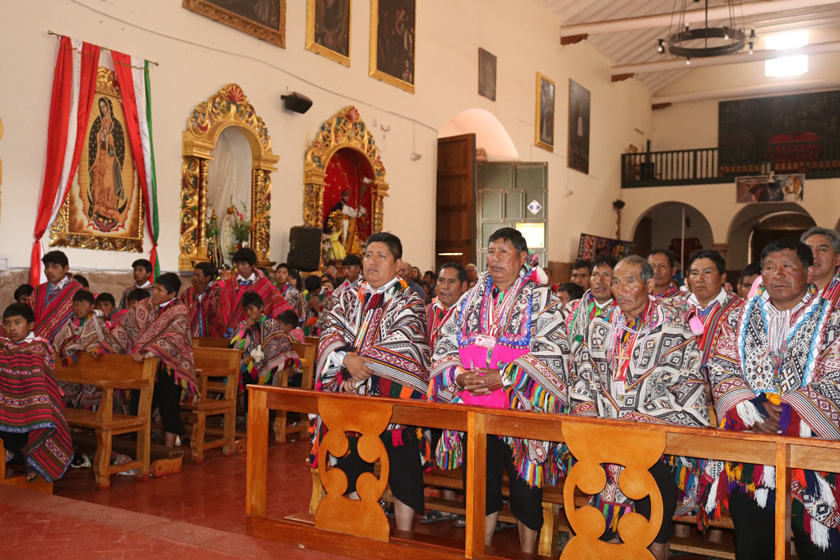
6. Marvel at the botanical gardens
It is a haven of peace in the heart of Pisac, founded in 1917 by Felipe Marin Moreno, Peruvian botanist and explorer.
Today, his son has opened the garden’s doors to share this heritage with the public.
It houses a wide variety of flowers and plants (cactus enthusiasts will be impressed!), as well as a collection of 200 species of potatoes.
The garden’s guardian, a friendly white cat, will probably follow you throughout your visit. The botanical garden also has a café, ideal for relaxing and enjoying a fresh smoothie or a local coffee!
- Address: Grau, cuadra 4 (near the Plaza de Armas) at the Florencio Hotel
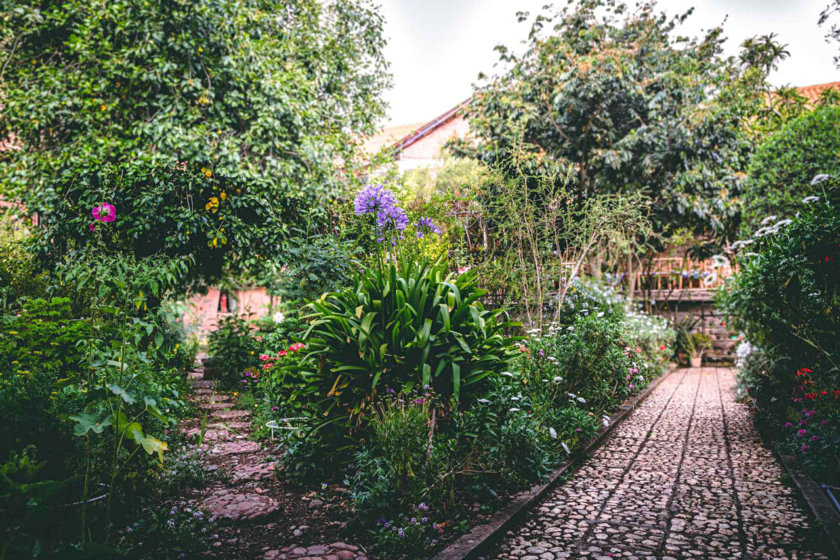
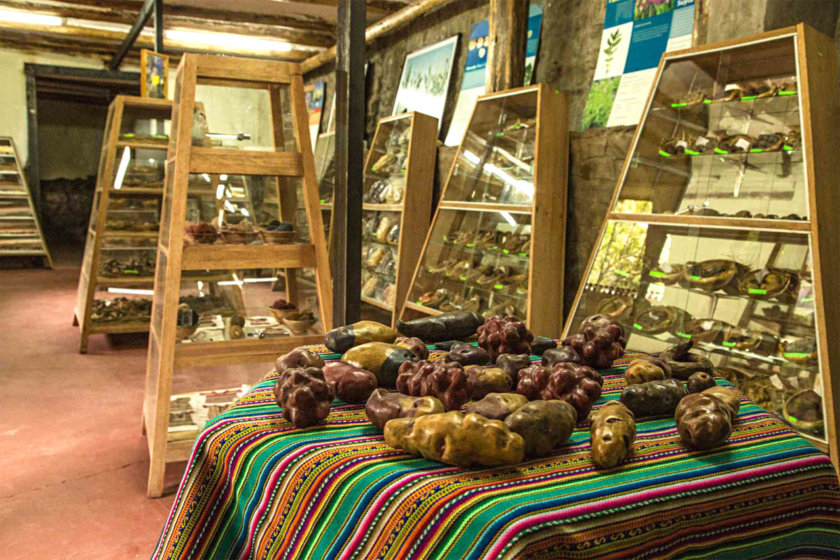
7. Cochahuasi Animal Sanctuary
Cochahuasi Animal Sanctuary offers the opportunity to support local conservation efforts while enjoying a great animal experience, ideal for families and nature lovers.
Located near Cuzco, this sanctuary is home to some of Peru’s most emblematic species, such as the condor, pumas, llamas and the spectacled bear, the only bear in South America.
These animals, victims of illegal trafficking or mistreatment, find a safe haven here, with care and food. Unfortunately, many can no longer be reintroduced into their natural habitat due to injury or dependence on humans.
- Km 22 of the Cusco-Pisac highway
- To get there from Cusco: Take a bus from Puputi street in the direction of Pisac (30 min-5 soles)
- From Pisac: cab (25 soles) or colectivo (3 soles)
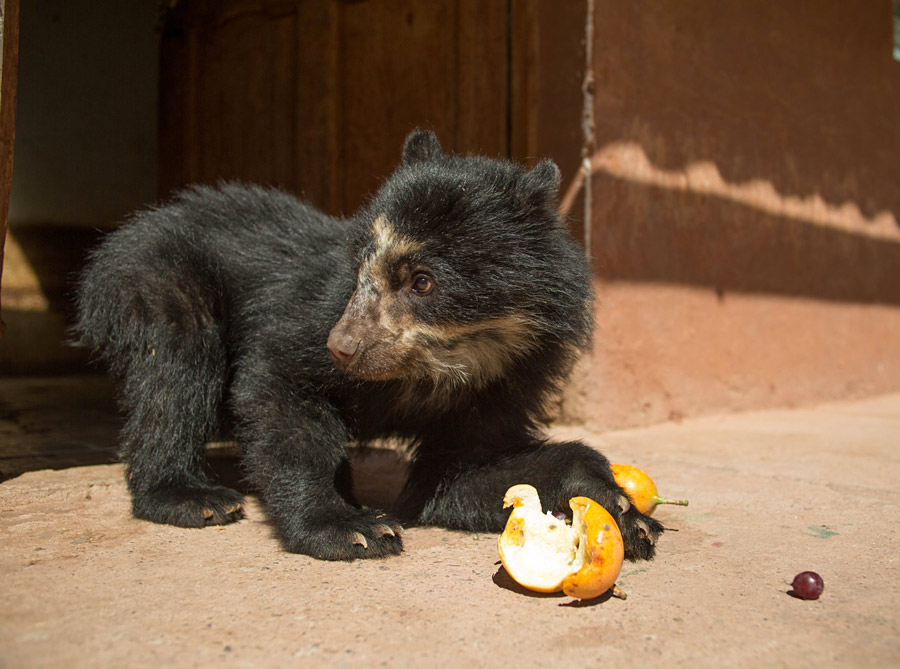
8. Awana Kancha
Near Cochahuasi, on the road between Cusco and Pisac, Awana Kancha is a place dedicated to preserving Andean traditions.
Created more than 17 years ago, this family project works with 11 local communities, strengthening ties with the peoples of the Andes and promoting their ancestral knowledge.
There is a camelid interpretation center where you can observe and feed 12 llamas, 24 alpacas, 7 vicuñas and 2 guanacos, while learning to differentiate their fibers and their historical role in pre-Columbian cultures.
There is also a traditional textile interpretation center where you can learn about natural dyeing techniques, weaving tools used by local artisans and even watch live demonstrations.
This partnership with the communities not only helps preserve these traditions, but also supports local economic development through the sale of handicrafts.
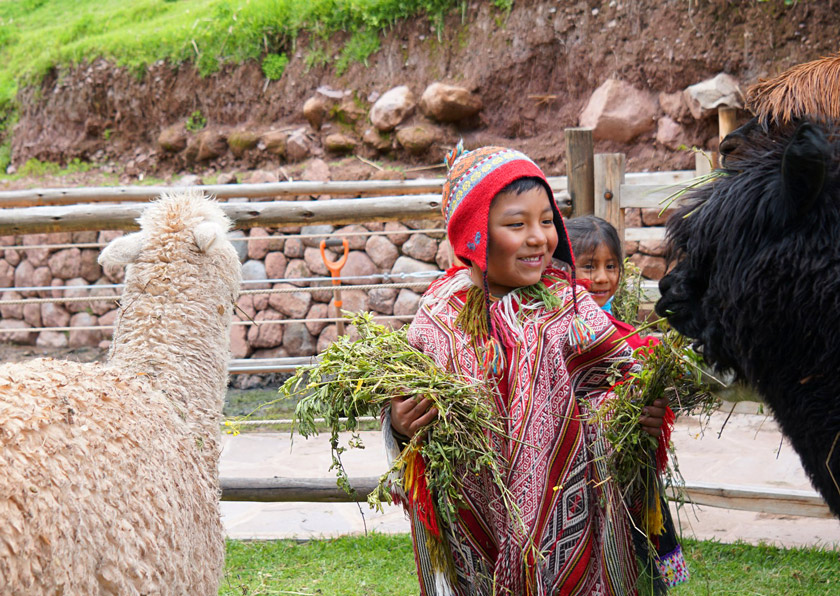
9. The village of Lamay
Just a 20-minute drive from Pisac, Lamay is a charming and lesser-known authentic village in the Sacred Valley.
Surrounded by magnificent scenery, it is the ideal place to stroll through an area still untouched by mass tourism. The village is famous for its cuy al horno, so now is the time to take advantage of it.
Be sure to stop at La Base, a café-restaurant run by a very friendly team.
Here everything is prepared with local products (juices, breakfasts, quiches, cakes, homemade kombucha, soup, etc.) and there is also a craft store (soaps, jewelry, snacks, fabrics, etc.)
- Mainique Street, Lamay
- La Base Facebook page
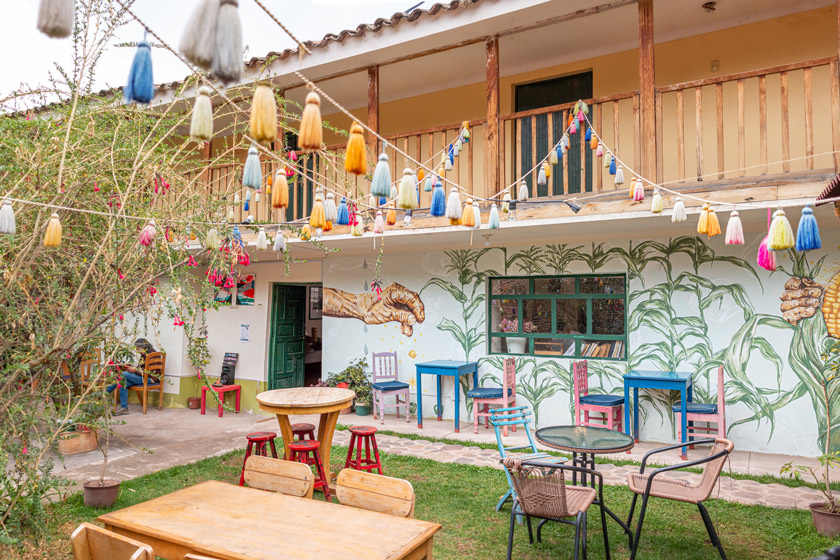
10. Discover 10,000 years of history
The Inkariy museum is halfway between Urubamba and Pisac, but it is worth the stop, as it is one of the best museums in the region!
Here you can discover 10,000 years of Peruvian history in 8 pavilions, each presenting an important pre-Columbian culture: Caral, Chavín, Paracas, Mocica, Nasca, Wari, Lambayeque and Chimú/Inca.
Each exhibit is very complete, with art, clothing, customs and beliefs, as well as the presentation of a scene with great attention to detail of each culture.
The visit can be done with or without a guide, in 1h-1h30, and is not boring at all!
If you want to eat there, you can choose the museum + 3-course rustic lunch option for 50 soles.
- Address Km 53, Monday to Sunday from 9h to 17h, entrance 35 soles
- Website
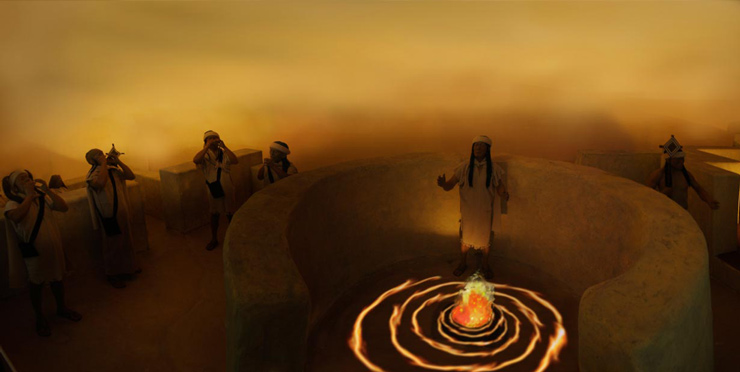
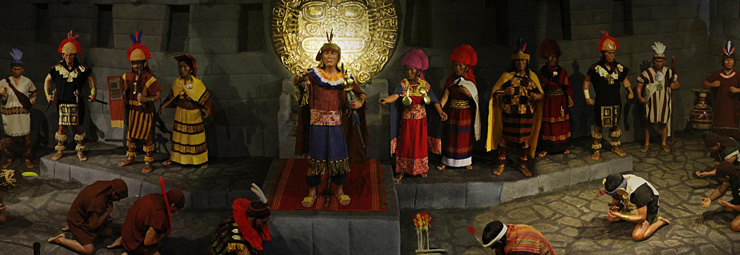
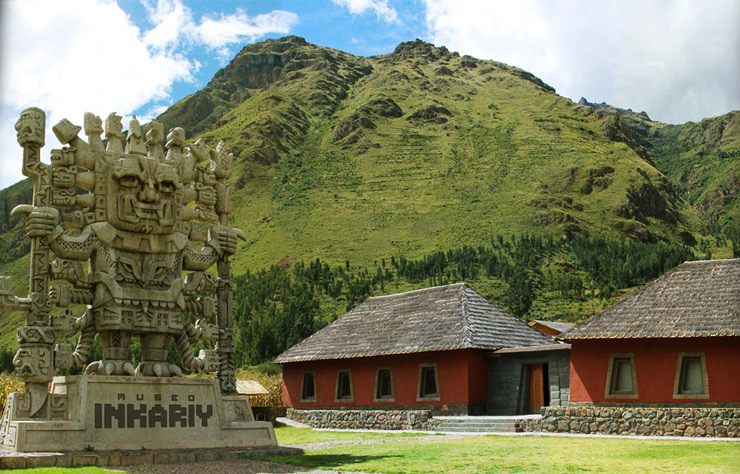
11. Hacienda Sarapampa
Hacienda Sarapampa is reached by following a narrow road that runs alongside the river, between houses and fields.
The land is home to a family that has been growing corn for three generations.
The hacienda has opened its doors to present the giant white corn typical of the region: its importance in history, its cultivation since pre-Columbian times, etc.
The visit continues with lunch in a Peruvian haute cuisine restaurant in an absolutely charming setting, accompanied by a Marinera show with a Peruvian Paso horse.
- Address: Km. 1.3 Taray-Paullo Highway. From Cuzco, turn right just before the Pisac bridge and continue towards the village of Taray. Monday to Saturday, from 10:00 a.m. to 3:00 p.m. Website
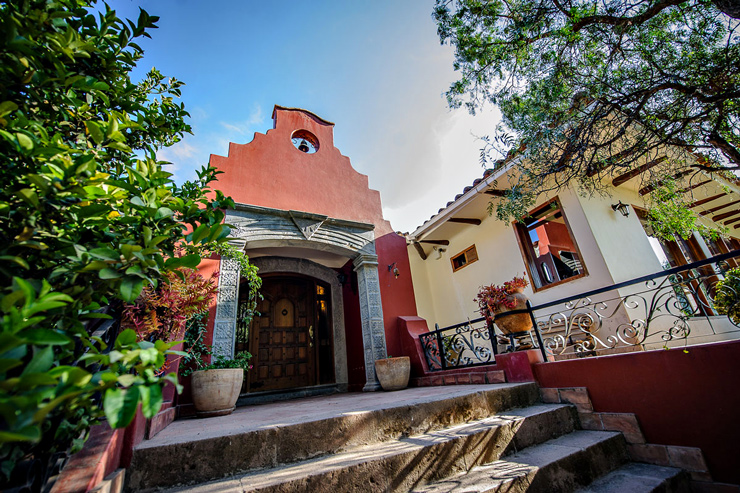
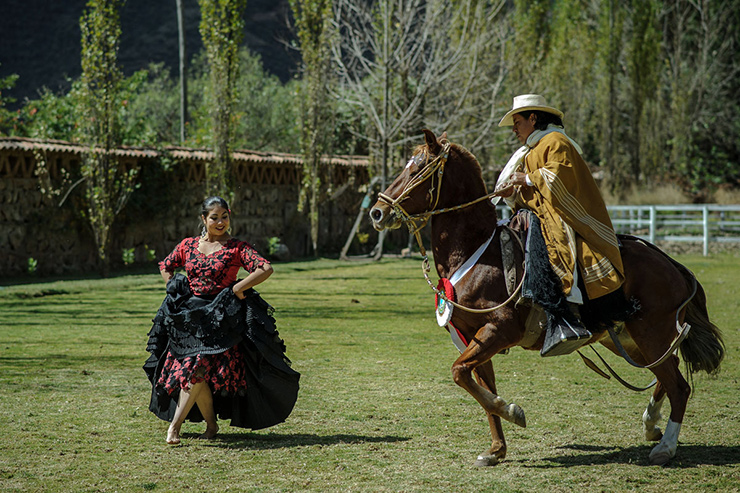
12. Relax at the spa
The Unucha spa at the Pisac Inn hotel is the ideal place to relax after visiting the ruins.
It is a small and charming rustic open-air spa that offers an aromatic herbal treatment and a series of massages.
It offers access to a dry sauna heated with volcanic rock and a Jacuzzi with views of the surrounding mountains.
Access to the spa is by reservation only and payment must be made at the Posada de Pisac in Pisac.
- Address: Plaza de Tachay, Monday to Friday from 10:00 a.m. to 5:00 p.m Website
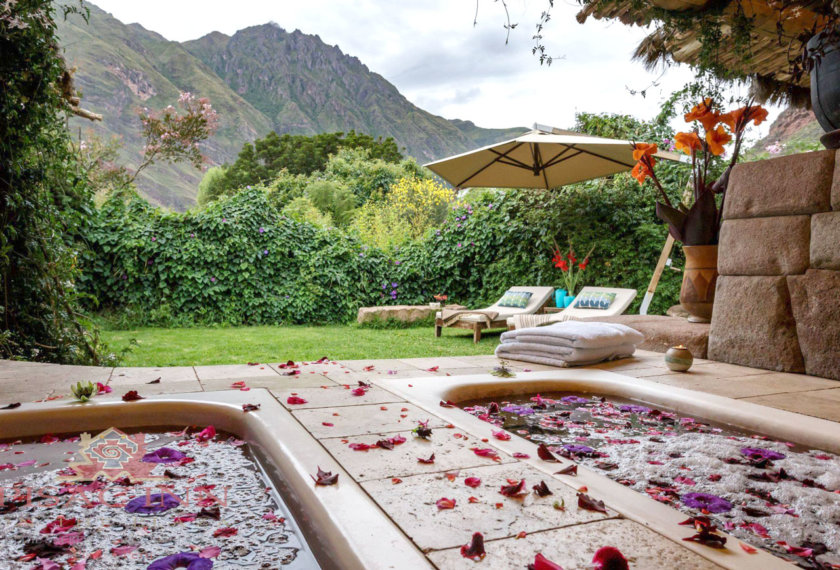
Where to stay in Pisac?
Pisac has the advantage of having a very good selection of charming accommodations. And in such an environment, it is impossible not to enjoy the views!
- Hospedaje Inti: a colorful, bohemian hostel that’s perfect for travelers on a tight budget. Very friendly atmosphere and tasty breakfast (available for an extra $5 USD). Dorms from $10 USD and private rooms from $15 USD.
- Chaska Pisac: set in a colonial-style building in the center of Pisac, with a peaceful garden and access to a shared kitchen. Comfortable rooms with mountain and river views. Great value for money, dorms from $10 USD and private rooms from $21 USD.
- Florencio Casa Hacienda: a rustic-style favorite in Pisac with cozy rooms, a fireplace, garden, and even a pool. Airport shuttle available. Continental breakfast included, from $82 USD per night.
Where to eat in Pisac
In Pisac there are many restaurants for all budgets, but here are my favorites:
- Ulrike’s Café is a café opened by Ulrike, a German woman who has lived in Pisac for about twenty years. There are several vegetarian options, a daily menu, homemade pasta and good desserts. Don’t forget to visit the rooftop terrace for a better view Address: Calle Pardo, 613, Pisac.
- Doña Clorinda is a family restaurant whose founder, Doña Clorinda, began selling empanadas and stuffed potatoes in the market. twenty-five years later, she has her own restaurant with a beautiful garden. Address: La Rinconada, San Luis, Pisac.
- Cuchara de Palo the chef has opted for a “slow food” menu with Peruvian and Andean dishes prepared with fresh local and organic ingredients. It is a cozy wooden restaurant with a balcony and a flower-filled patio. Prices are around 35 soles per person (more expensive than the local average), but it is a must-visit in Pisac. Address: Plaza de Armas, in the Pisac Inn hotel.
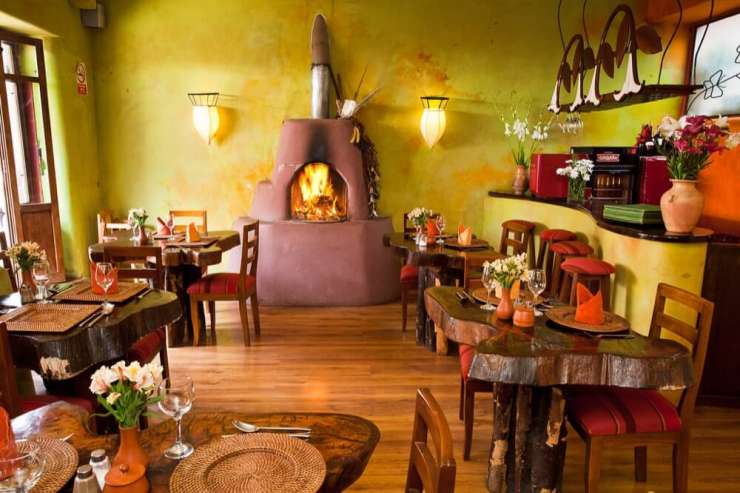
How to Get to Pisac
- By bus: The bus costs about 7 soles. It’s a cheaper option, but the journey is longer and the buses are not always in the best condition.
- By colectivo from Puputi Street: The colectivo costs about 10 soles per person and takes around 45 minutes. To return, simply wait on the side of the road to Cusco and flag down a colectivo — if there’s space, it will stop.
- By taxi: A taxi from Cusco to Pisac costs around 60–80 soles. Be sure to specify whether you want to go to the town or directly to the ruins.
- With an organized tour: The easiest way to visit Pisac, Ollantaytambo, Chinchero, and enjoy lunch without worrying about transportation. You can book it here:
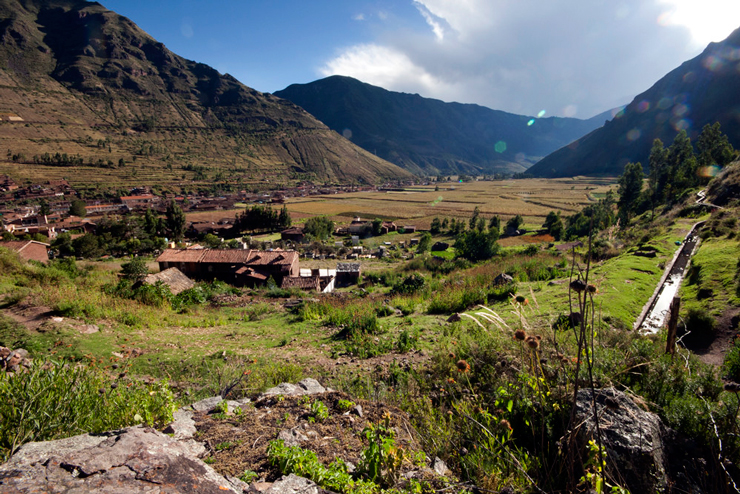
How Much Time Should You Spend in Pisac?
If you have a fairly tight itinerary, I recommend focusing on the ruins and the market, which you can visit in half a day if you leave Cusco in the morning.
Is It Possible to Combine Pisac with Other Places in the Sacred Valley in One Day?
Absolutely!
It’s perfectly possible to combine a visit to Pisac with other highlights of the Sacred Valley in a single day — you’ll just need to organize your itinerary carefully.
Here are two possible options, depending on your starting point:
Option 1 – From Cusco
- Leave early in the morning to visit Pisac, including its magnificent Inca ruins and craft market.
- Continue to Ollantaytambo to explore its impressive fortress and have lunch in the village.
- On the way back to Cusco, stop in Chinchero for a textile demonstration and a stroll through the village.
Option 2 – From Ollantaytambo
- Start the day by visiting Pisac.
- In late morning, head to Chinchero to discover its textile tradition and authentic atmosphere.
- End the day in Ollantaytambo, where you can have dinner and spend the night — ideal if you plan to take the train to Machu Picchu the next day.
You can book the full-day tour to Pisac, Ollantaytambo, and Chinchero from Cusco here:
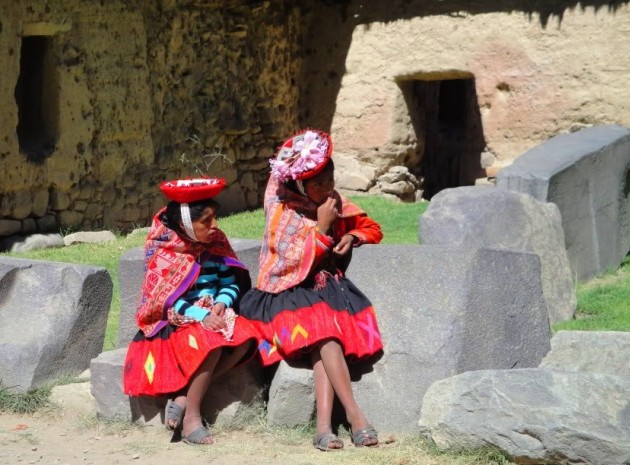
Which is the best time to visit Pisac?
The best time to visit Pisac is during the dry season, from May to September, when the days are sunny, the temperatures pleasant and the roads easy to walk.
This is the ideal time to explore the ruins and enjoy the handicraft market under clear skies.
The rainy season, from November to March, offers lush green landscapes and a calmer atmosphere, but frequent downpours can make it difficult to visit the outdoor sites.
Book Your Flight at the Best Price
Planning a trip to Peru? To get the best deal on your flights, I recommend using this flight comparison tool, in partnership with Skyscanner.
It’s the easiest way to find the lowest prices for both international flights and domestic flights within Peru—ensuring you pay the best rate with no hassle!
Rent a Car in Peru
Renting a car is one of the best ways to explore Peru at your own pace and make the most of your trip!
Personally, I always use Booking.com Cars for a few key reasons:
- Easily compare prices from all major rental agencies in one place—finding the best deal has never been easier!
- Free cancellation on most bookings, so you can reserve with peace of mind.
- Better insurance coverage at a lower price than rental companies—saving you money with no extra effort.
Click the button below to find the best car rental deals in Peru:
Rent a car
Book entrance tickets and guided visits
Take a travel insurance
Book a tour
✈️ Book your flight
Traveling to Peru? These articles will help you!
Discover all my articles about Peru: All my tips and itineraries to plan your trip in one place!
40 EPIC Things to Do in Peru (+ My Best Tips)
- Machu Picchu: Tickets, Circuits, and Top Tips to Plan Your Visit
- Aguas Calientes (Machu Picchu Pueblo): Tips, Hotels, and What to Do
- Huayna Picchu vs. Machu Picchu Mountain: Which Hike is Best?
- Inca Trail: The Definitive Guide to the Classic Trek to Machu Picchu
- Salkantay Trek: A Complete Guide to the Best Inca Trail Alternative
- Inca Jungle Trail (Machu Picchu): What to Expect + My Experience
- Lares Trek to Machu Picchu: 4-Day Itinerary & Guide
- 30 Epic things to do in Cusco (+Tips)
- One day in Cusco: The Perfect Itinerary (1st time visit)
- 2 or 3 Days in Cusco: The Perfect Itinerary for First-Time Visitors
- 19 Free Things to Do in Cusco + My Best Tips
- How to Get to Cusco: Best Transport Options Compared
- Cusco Tourist Ticket Guide: Prices, Sites, and How It Works
- How to Visit the Inca Ruins of Cusco: Sacsayhuamán, Tambomachay, and More
- Sacred Valley: 23 Best Places to Visit (+Where to Stay)
- Ollantaytambo: 15 Epic Things to Do in the Heart of the Sacred Valley
- Maras and Moray: How to Get There, Entrance Fees, and Tips
- Urubamba: The Best 10 Places to Visit
- Laguna Humantay (Cusco): How to Get There, What to Expect, and Tips
- How to Visit Rainbow Mountain from Cusco: Hike, Tours & Tips
- Itinerary: 5-6 days in Peru – Lima, Arequipa, Colca Canyon, Cusco, Sacred Valley and Machu Picchu
- Itinerary: 7-8 days in Peru – See the maximum in one week
- Itinerary: 10 days in Peru – The ideal itinerary for a short stay in Peru
- Itinerary: 2 weeks in Peru – The classic route
- Itinerary: 15 days in Peru – An itinerary that includes northern Peru
- Itinerary: 3 weeks in Peru
- Itinerary: 3 weeks in Peru + Bolivia – The best itinerary for visiting both countries
- Itinerary: 1 month in Peru – What to see and do in 30-31 days
You’re using Pinterest? Here is the picture to pin!
